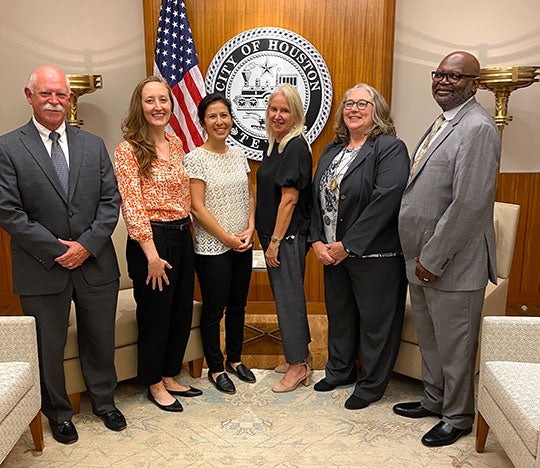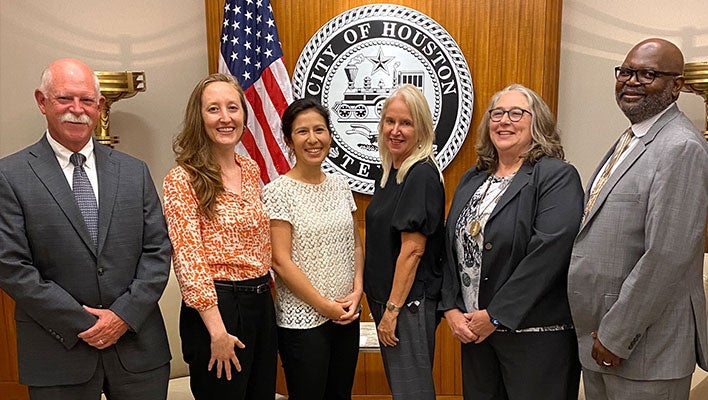Each year as schools reconvene, viral infections also become a part of the back-to-school environment. For the past four years, SARS-CoV-2, the virus that causes COVID-19, has been detected at increasing levels in school wastewater samples at the start of each school year.
The ability to monitor for these outbreaks, as well as influenza and respiratory syncytial virus at 46 HISD schools, is part of a citywide program managed by Houston Wastewater Epidemiology — a team of collaborators with the Houston Health Department, Rice University and Houston Public Works.
HISD schools for the pilot preK–12 wastewater monitoring program were selected early in the pandemic from zip codes with the highest COVID-19 incidence rate.
“There has been nationwide interest in facility-level surveillance to assess the presence of an outbreak and inform local communities and those with underlying health conditions,” said Loren Hopkins, chief environmental science officer for the Houston Health Department and a professor in the practice of statistics at Rice. “Through this pilot program, schools have proven to be an integral part of Houston’s overall wastewater program. Community stakeholders are interconnected and work to protect their schools and those around them,” said Hopkins.
Rice’s Lauren Stadler, an associate professor of civil and environmental engineering, led citywide wastewater sampling and laboratory methods. Katherine Ensor, Rice’s Noah G. Harding Professor of Statistics, was in charge of statistical analysis and reporting efforts. Public health interventions and resources have been led by Hopkins at Houston’s Health Department and orchestrated by David Persse, the public health authority and EMS director for the city of Houston..
Houston’s Virus Alert Program pairs school wastewater reporting with the individuals with the largest impact on student health — school nurses and student caregivers. Nurses and student caregivers can sign-up for time-sensitive text- and email-based alerts.

Hopkins said, “Houston’s alert program is unique and the framework encourages greater engagement between the health department and schools, educating people about infectious diseases and how to reduce their spread. In some schools, the program has triggered vaccination events.”
Initially launched in December 2020 to monitor for SARS-CoV-2, the pilot program was expanded to include influenza and respiratory syncytial virus in November 2021 and September 2022, respectively.
In 2024, Stadler’s laboratory began using multiplexed PCR assays to target other vaccine-preventable diseases, such as measles, mumps and rubella, that might be captured from facility manholes.
The Center for Research Computing’s Spatial Studies Lab at Rice manages the data published on the public-facing dashboard, which has long served as an effective source of information for Houstonians citywide.
The school wastewater monitoring program brought forth funding from the science and innovation grants from the Centers for Disease Control and Prevention and the National Wastewater Surveillance System that designated Houston as a center of excellence for wastewater epidemiology.
Shawn Hutchins
Communications and Marketing Specialist
George R. Brown School of Engineering and Computing

